20 Best Thyme Substitutes
Thyme is a famous herb in various cuisines but knowing thyme substitutes are even better. Trust me. I am not even exaggerating.
Let’s say you want to try some Mediterranean recipes this weekend, but you find out it requires thyme, and you do not have such herbs at home, even none at the supermarket, then what would you do? Freak out?
Nah-ah! You can do better than this because I will show you here are many excellent alternatives for thyme. So do not go anywhere and get ready to learn about this earthy herb and its perfect replacements.
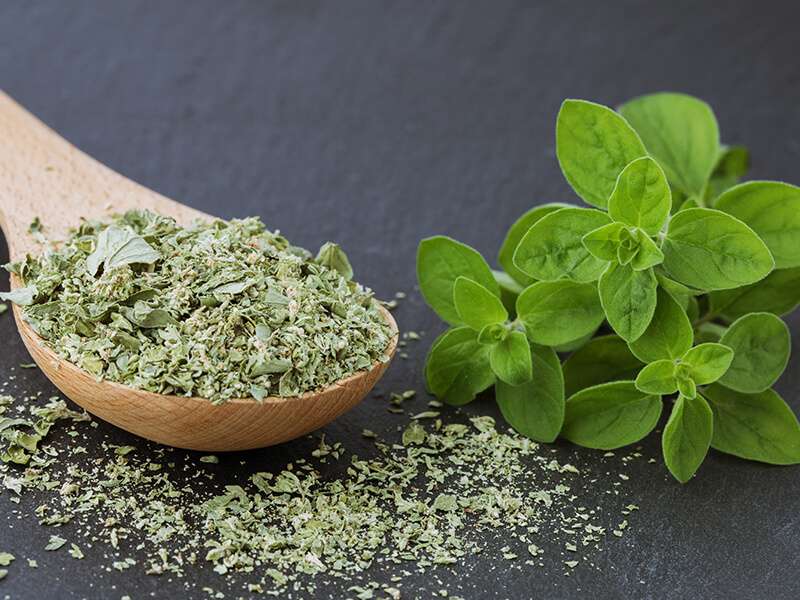
Extensive List Of Substitutions For Thyme From Fresh To Dried Herbs
There are 20 substitutions for you to choose to replace thyme. For your better choice, I also set these 20 alternatives into 2 big groups: Thyme Substitutes In Fresh Form And Thyme Substitutes In Dried Form.
Here is the list of these brilliant 20 replacements for thyme:
Fresh Forms
- Oregano
- Basil
- Marjoram
- Marjoram and Parsley
- Tarragon
- Sage
- Savory
- Rosemary
- Dill
Dried Forms
- Dried Thyme
- Dried Oregano
- Dried Basil
- Dried Marjoram
- Dried Tarragon
- Dried Savory
- Dried Bay Leaf
- Italian Seasoning
- Poultry Seasoning
- Za’atar
- Herbes de Provence
See! I am not lying. Too many options for you to choose from, right?
Thyme – A Tiny Herb Comes In Big Healthy Benefit Package
If you love Mediterranean or European cuisine, you might have already tried thyme before. Indeed, thyme is widely used in various recipes thanks to its flavorful taste and pleasant scent. But what else could you know about them? Keep reading for more information.
General Ideas About Thyme That You Have (or Have Not) Known
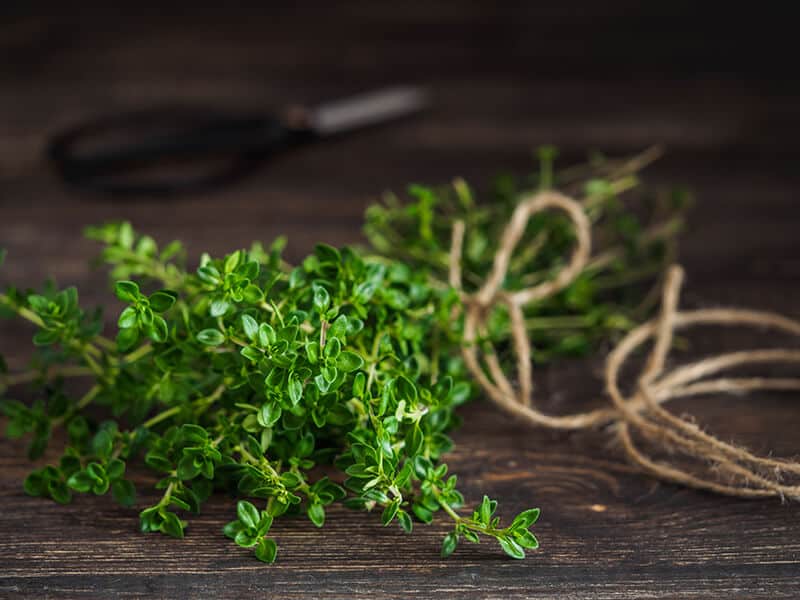
Thyme is a green herb that belongs to the Thymus genus and the Lamiaceae mint family (1). Their origin is from the Mediterranean, making them an indispensable ingredient in this cuisine.
Thyme is grown in clusters with green, round, and tiny leaves. There are around 350 thyme varieties around the world, but the most popular type is common thyme. Once you try this thyme, you will taste the earthy, minty, slightly lemony, and somewhat savory-sweet flavor in them.
Dried thyme is another flavorful choice for you, and you can find them easier in the supermarket. Either fresh or dried, thyme can enhance the flavor of your dishes, from vegan to meat ones or from desserts to drinks.
Besides its uses in culinary, thyme is also known for its medicinal and landscaping applications. And the following part will explain how good they are regarding health benefits if you use thyme.
Evidence-Proven Health Benefit of Thyme
You might want to get some thyme and grow them in your garden after you read this part. Here are 6 significant impacts of thyme on your body.
- Good Treatment To Improve Immune System: The vitamin C, A, antioxidants, and other nutrients that you can find in thyme will keep you safe from any minor diseases like cold, flu, cough, sore throat, etc., or even some acute or chronic Illnesses.
- Control Your Blood Pressure: Researchers have proven thyme extract can reduce the risk of hypertension, particularly from a thyme spice called Thymus linearis Benth (2).
This extract can regulate the blood pressure at the appropriate level or manage good blood circulation by a cup of thyme tea daily.
- Good For You Eyes: The antibacterial and antifungal compounds in thyme can heal pink eye or other eye problems.
What you have to do to prevent eye infection is prepare a cup of thyme tea and wait for it until cool. Use a clean cloth or towel to make it wet with this tea; then apply the cloth to your eyelids.
- Heal Your Wound: The antibacterial once again works as a perfect bacteria fighter if you have any wound. It also prevents infections by using thyme essential oil or thyme extract.
- Boost The Digestive Function: If your stomach is under the weather, thyme tea might help you feel better. Thyme’s antibacterial properties will support the function of your digestion and lower the risk of bad bacteria in your gut.
- Light Up Your Mood And Make You Smell Good: Thyme has carvacrol compound, a good component to make your brain stress-free; either you drink thyme tea or use its essential oil. It also makes your breath smell fresh if you put some oil in your toothpaste.
Keep a bottle of thyme essential oil around; you do not know how useful they are. Watch this video to know more:
Replacement Of Thyme And Its Appropriate Ratio
Based on the flavor of each ingredient, they will have different substitution ratios. This table is the summarized information about it. Take a look!
So, What Are Good Candidates For Thyme Substitutes?
In this section, I will divide the list into 2 main categories: Fresh and Dried substitutions. And either what form they are, I guarantee they all have distinctive features that will make your dish more special.
10 Awesome Fresh And Green Ideas For Thyme Alternative
If you have a garden, I think you might have some of these substitutes. Because some alternative herbs here are easy to grow and their application in cooking is also varied like thyme. And here are 10 choices that you can consider in place of thyme.
1. Oregano
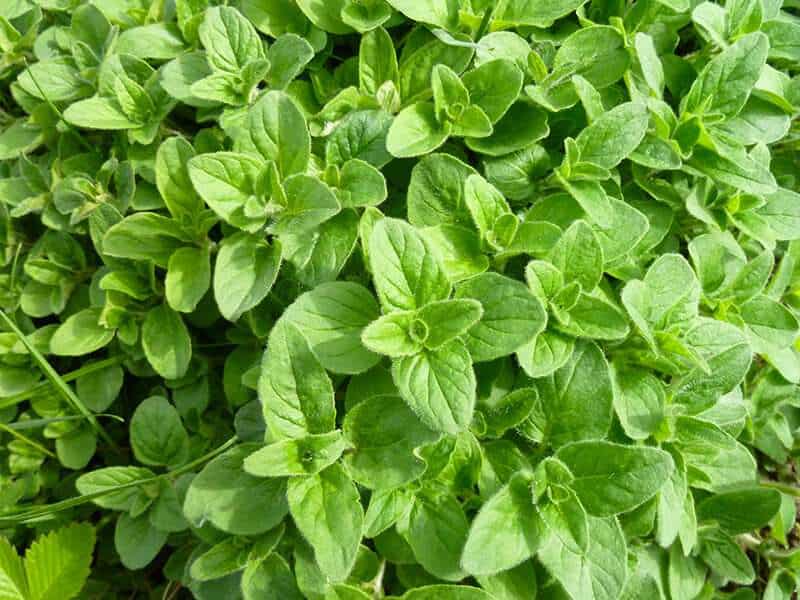
Fresh oregano is such a perfect substitution for fresh thyme as they both have earthy, minty, citrus, and slightly bitter notes. The similarities between thyme and oregano derive from the fact that they are in the same mint family.
Choosing oregano for thyme alternative works fine in any Italian recipe. However, oregano’s overall flavor might be stronger than thyme. So there are 2 ratio options for you to replace fresh thyme with fresh oregano.
You can apply the ratio of 1:1 (1 teaspoon of fresh thyme equals 1 teaspoon of fresh oregano), or you can reduce a little bit of oregano amount by 3/4 for 1 part of thyme (1 teaspoon of thyme for 3/4 teaspoon of oregano, all in fresh form).
In case you use fresh oregano to replace dried thyme, double the quantity of oregano for the closest flavor. It means you will need 2 teaspoons of fresh oregano to replace 1 teaspoon of dried thyme.
And do you know why I have to double the amount of fresh oregano? Because the dried form’s flavor is always stronger and more concentrated than the fresh form.
2. Basil
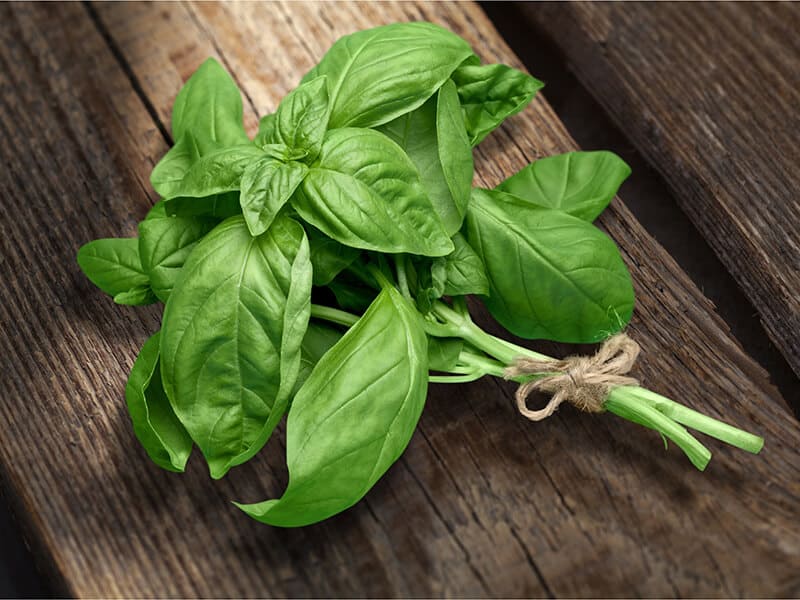
Ah, there it is, basil. Unsurprisingly, basil must be shown up in this list because this green herb is also in the same mint family as thyme. So just go for it, grab some fresh basil to replace thyme.
Like oregano, basil is the second-best alternative for thyme. It can shine in any Mediterranean food, chicken salad, or tomato-based dishes (e.g., pasta, spaghetti, lasagna, or pesto).
But as basil’s flavor tends to be slightly stronger than thyme, you should use a half amount of fresh basil in place of every portion of fresh thyme, or 3/4 fresh basil for 1 part of fresh thyme.
If you want to replace dried thyme with fresh basil leaves, you can apply the ratio of 1:1. So 1 teaspoon of fresh basil leaves equals 1 teaspoon of dried thyme.
3. Marjoram
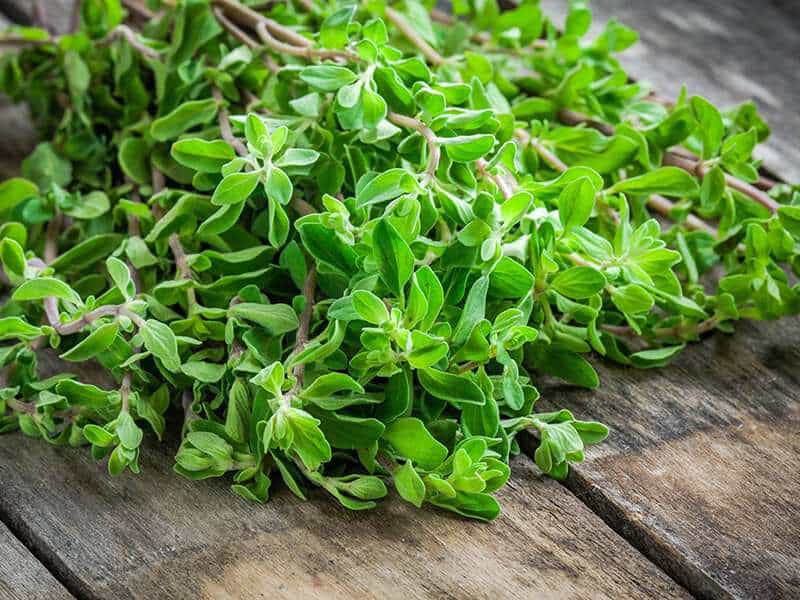
Here is another herb that belongs to the same plant family as thyme. Yes, they are marjoram – a minty, earthy, woody, and sweet herb. If you love Italian foods so much, you should use this fresh herb. They also work well in salad dressing, meat, and veggie recipes.
If you want to use fresh marjoram to put out the thyme-like flavor, use the ratio of 1:1. So 1 teaspoon of fresh thyme can be replaced by 1 teaspoon of fresh marjoram.
And similarly to the oregano case, you should double the quantity of fresh marjoram to exchange for 1 part of dried thyme (for example, 1 dried thyme teaspoon equals 2 fresh marjoram teaspoons).
4. Marjoram And Parsley
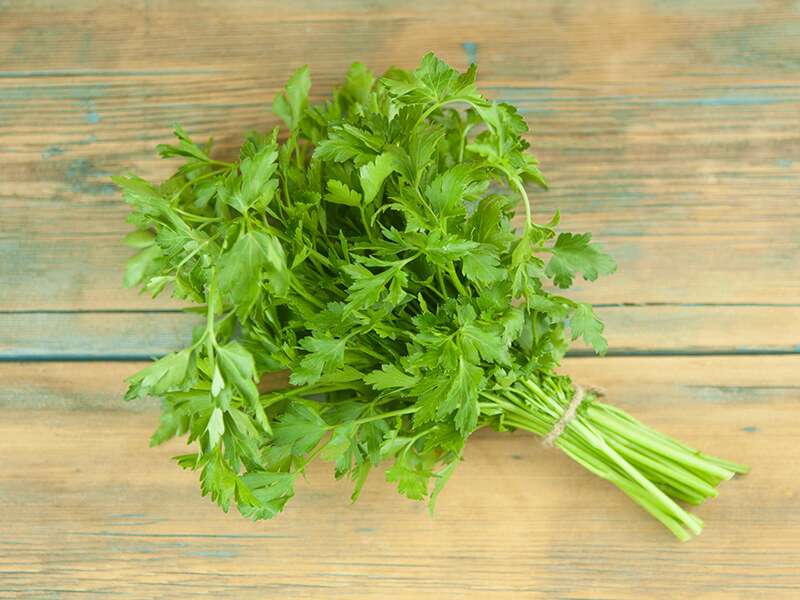
Parsley’s flavor is pretty mild. Some people even think their taste is bland. So if you want to use this herb as a thyme substitute, you should combine it with marjoram.
cream based dishes, as well as on salads and with meat and fish
Parsley, somehow, can balance the sweet flavor of marjoram, making it become the fresh and flavorful combo to replace thyme. And these 2 will make your salad, meat, fish, or creamy dishes more delicious.
With the minty and earthy notes of marjoram and the freshness of parsley, you can use a mixture of 1 marjoram teaspoon and 1/2 parsley teaspoon for each teaspoon of fresh thyme.
5. Tarragon
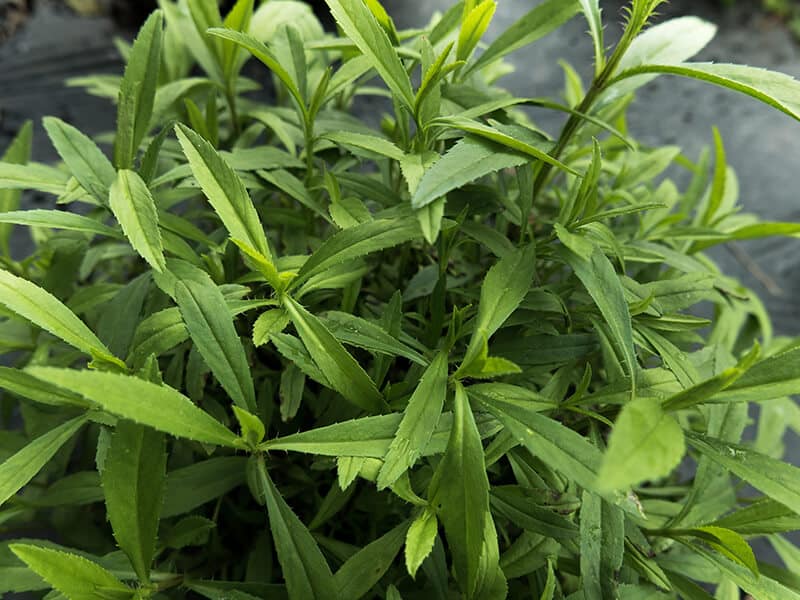
Tarragon is another acceptable exchange for thyme. Tarragon’s flavor is somewhere between bitter and sweet with a unique taste. This herb can be a good ingredient for any roasted vegetables, soup dishes, chicken or fish recipes, and especially in French cuisine.
However, compared to other thyme alternatives, tarragon might be the mildest substitution for thyme. But this herb also has a slight mint flavor like thyme, so who would have known how good they are as thyme replacement if you did not try them.
You can use the 1:1 ratio in this case. I mean, 1 teaspoon of fresh thyme can be relevant to 1 teaspoon of fresh tarragon.
6. Sage
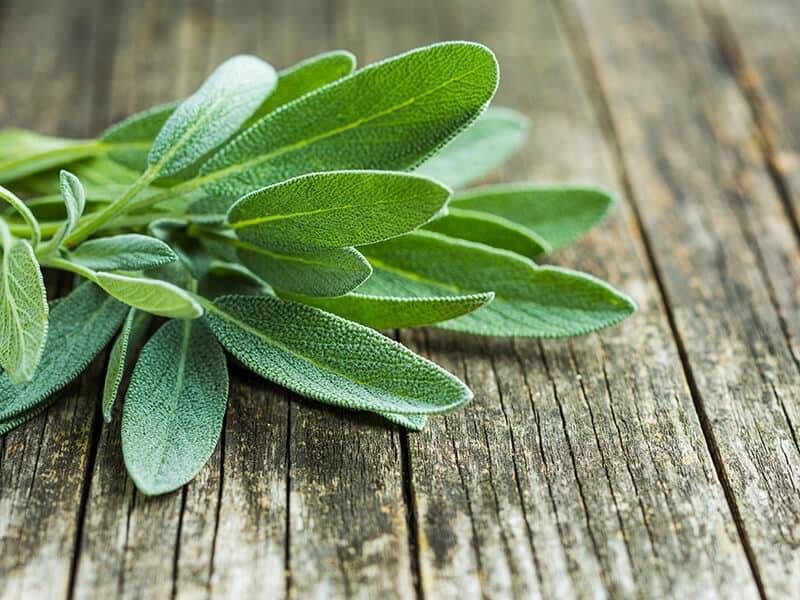
Though the sage taste is more intense than thyme, with its mint and citrus hints, sage can be considered a suitable thyme substitute.
Moreover, the accessibility of sage might be easier for you as you can find fresh sage in the markets or groceries.
There are also 2 options for you in the exchanging ratio. If you don’t really mind the stronger flavor of sage, you can use 1 sage teaspoon for 1 thyme teaspoon.
Or you can decrease the amount of sage to 1/2 for 1 portion of thyme. For example, 1/2 teaspoon of sage can work well in place of 1 teaspoon of thyme.
With this substitution, you might not even recognize the difference in your fatty meat, poultry, sausage, creamy sauce, soup, and bean dishes when you use sage in place of thyme.
7. Savory
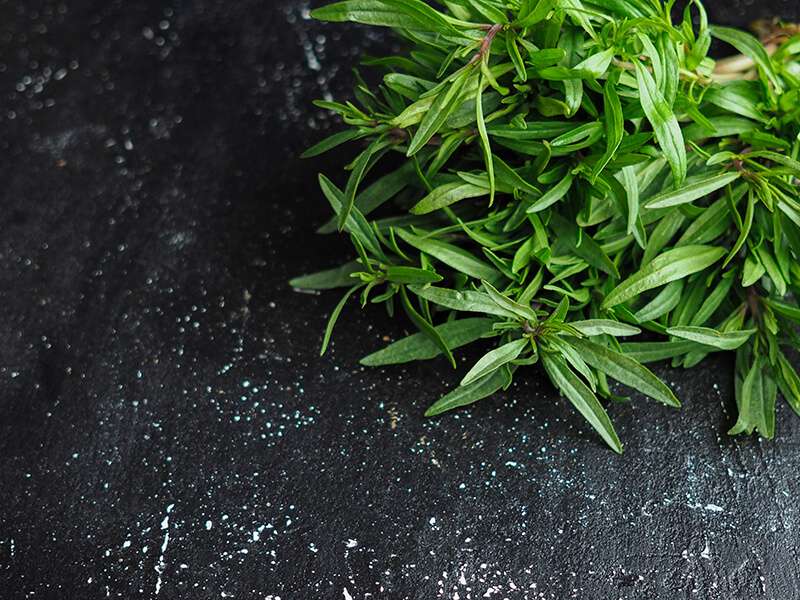
There are 2 savory varieties; one is summer savory, and one is winter savory. Though you can use either summer or winter types, they are still good to work in place of fresh thyme as they all have peppery, savory, and earthy flavor.
But in reality, summer savory is more preferred as it has a touch of minty, spicy, and sage, making them more priority than the winter variety. And this herb is excellent for several Mediterranean ideas.
Use the same amount of savory to replace fresh thyme. For replacing dried thyme, double the level of such herb to swap. So 2 teaspoons of fresh summer savory equal 1 teaspoon of dried thyme.
8. Rosemary
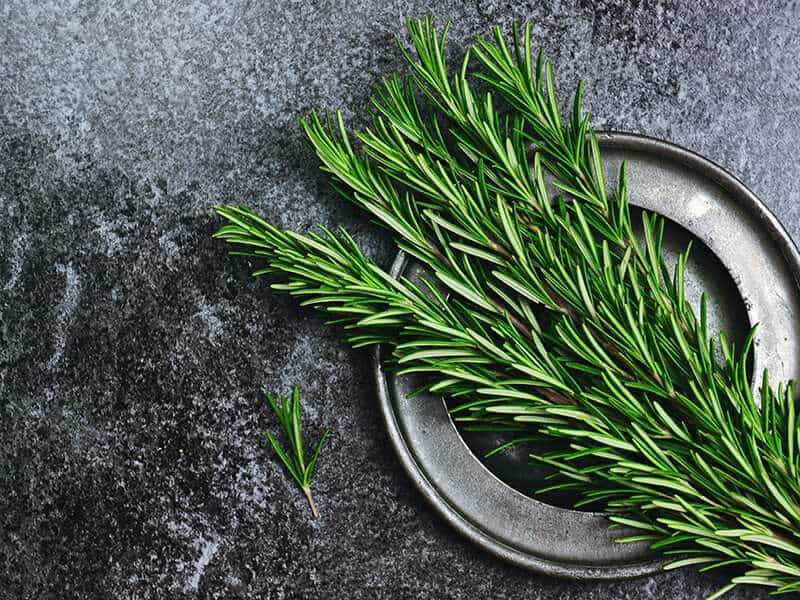
Rosemary has always been my favorite herb. Their flavor profile is so unique, making it so hard to find the word to describe it. Let’s see; a little of woody, citrus, sage, mint, pine, and even lavender hint in one herb.
But why makes rosemary become a good thyme substitution? In fact, rosemary is in the same Lamiaceae family as thyme. So somehow, rosemary’s woody hint works fine to replace thyme in a pinch.
But as rosemary has a stronger aroma, you should use 3/4 teaspoon of rosemary leaves to replace 1 teaspoon of thyme. This substitution is perfect for meaty dishes (lamb or pork) or some broth-based soup (cauliflower potato soup).
9. Dill
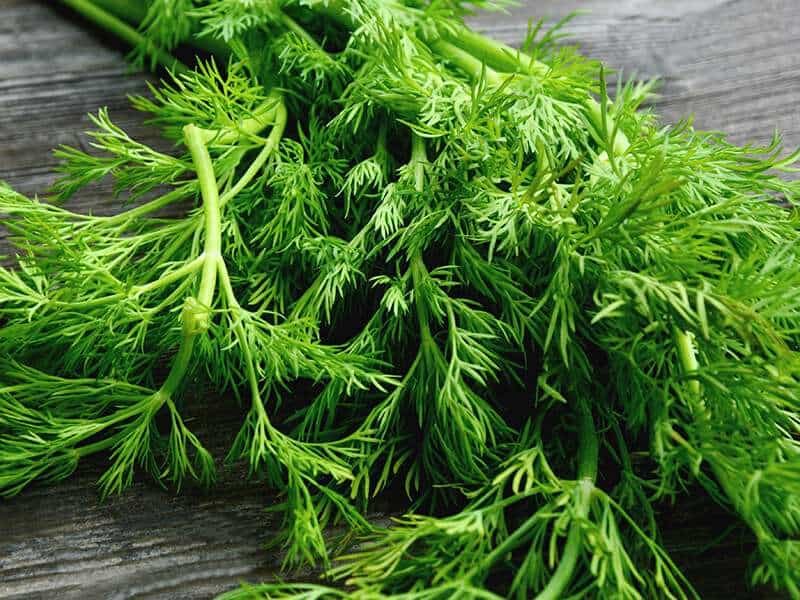
Dill is a commonly used herb in many Asian and Middle Eastern recipes. But frankly, the flavor between dill and thyme is not similar. Dill has a grassy, citrus-like note, and it is easy to lose flavor. They also do not have an aroma smell.
But it does not mean that you cannot give them a shot to swap for thyme. Try 3/4 teaspoon of dill for 1 teaspoon of thyme and see how it would happen. This alternative can fit in many meaty recipes, soups, or salad dishes.
And Other 11 Thyme Alternatives With Dried Herbs and Spices
Human creation is unlimited. Therefore, when it comes to the substitution of something, people can always manage and find various suitable choices.
As I just mentioned about the fresh herbs for swapping thyme, now this part will cover other 11 brilliant dried herbs and spices that you can apply as a thyme substitute.
10. Dried Thyme
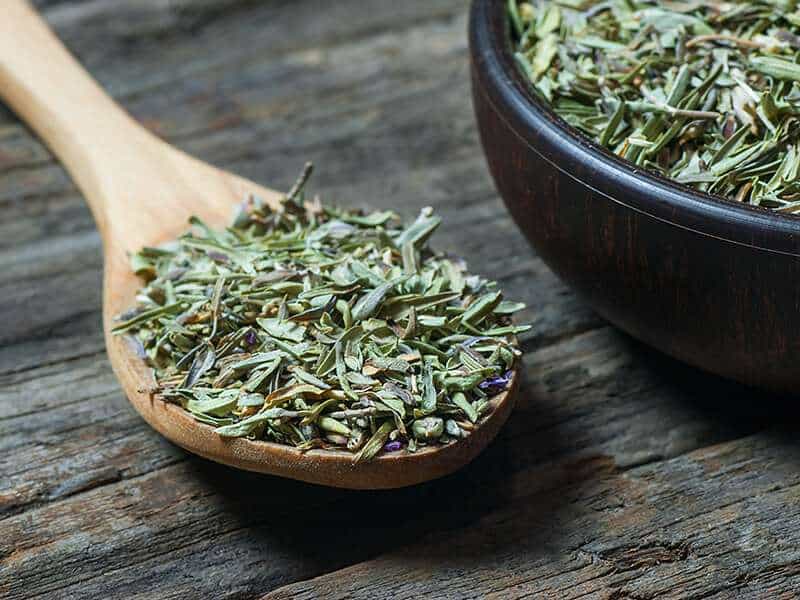
If you do not have fresh thyme on hand, then nothing can beat dried thyme to substitute the fresh ones. They are perfect for soups, sauces, braises, pasta, poultry dishes, or even bread.
And I explained, the dried form might be stronger in flavor than the fresh form. And you cannot expect your dish will have the same texture as when you use fresh thyme. Anyway, dried thyme is still a good option to try.
Use the ratio of 1:3 to replace. It means that 3 portions of fresh thyme will equal 1 portion of dried thyme as dried ones’ flavor is more concentrated.
A taste test between fresh thyme and dried thyme on steak will show you how different they are.
11. Dried Oregano
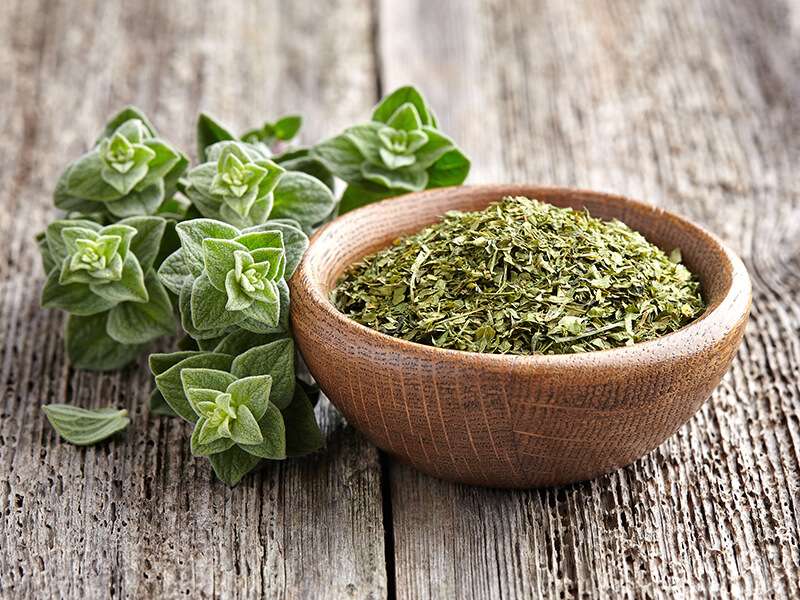
Similarly, dried oregano is another solution for fresh thyme. Dried oregano also pairs well with various dried herbs and spices (like in Italian seasoning, which I will discuss shortly).
For the best swap, you should reduce the level of dried oregano to 1/2 for a whole amount of fresh thyme. Do not add too much dried oregano; otherwise, their flavor might overpower other tastes in your dish.
12. Dried Basil
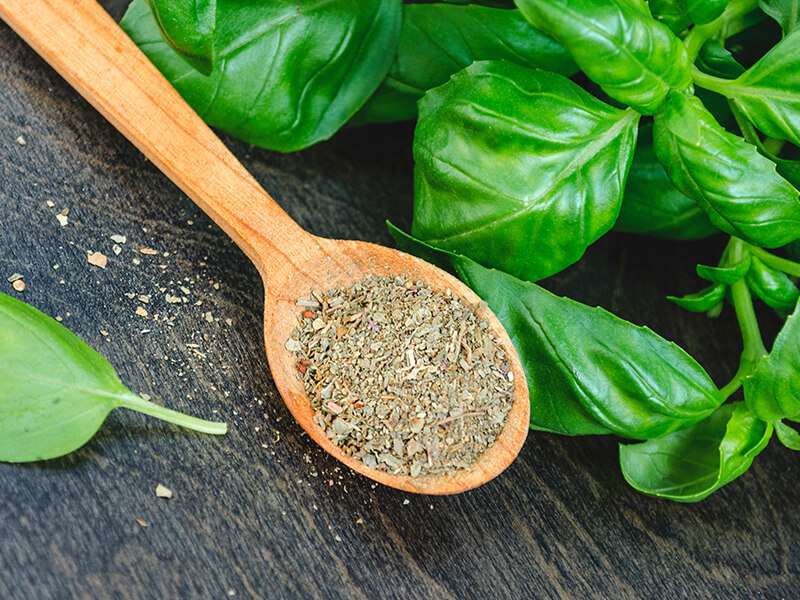
Compared to fresh basil, dried basil might not be good enough to be a thyme substitute as they do not have a distinctive flavor profile like fresh ones. But it will not harm anything to try.
The 1:1 ratio of 1 dried basil teaspoon would be sufficient to swap for 1 fresh thyme teaspoon. Or 2 teaspoons of dried basil for 1 teaspoon of dried thyme is not too bad.
And you can use this substitution to season vegetable, meaty recipes, soups, pasta, and sauces.
13. Dried Marjoram
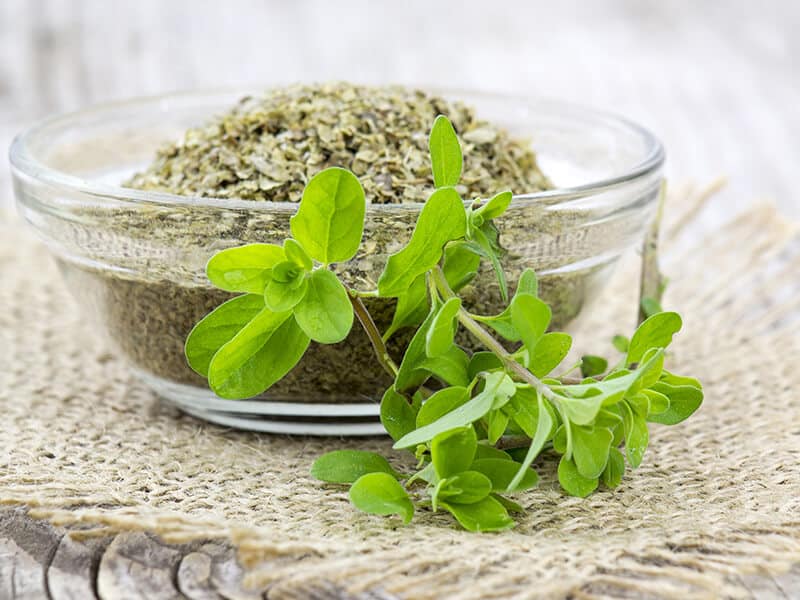
If I have dried basil as a thyme alternative, how could I miss dried marjoram, right? Indeed, the versatility of dried marjoram can make them a good option in exchanging thyme.
For the substitution ratio, you will need to decrease the level of dried marjoram to 1/2 for 1 part of fresh thyme. So, it will be 1/2 teaspoon of dried marjoram to exchange for 1 teaspoon of fresh thyme. Or 1 portion of dried marjoram can replace 1 portion of dried thyme.
14. Dried Tarragon
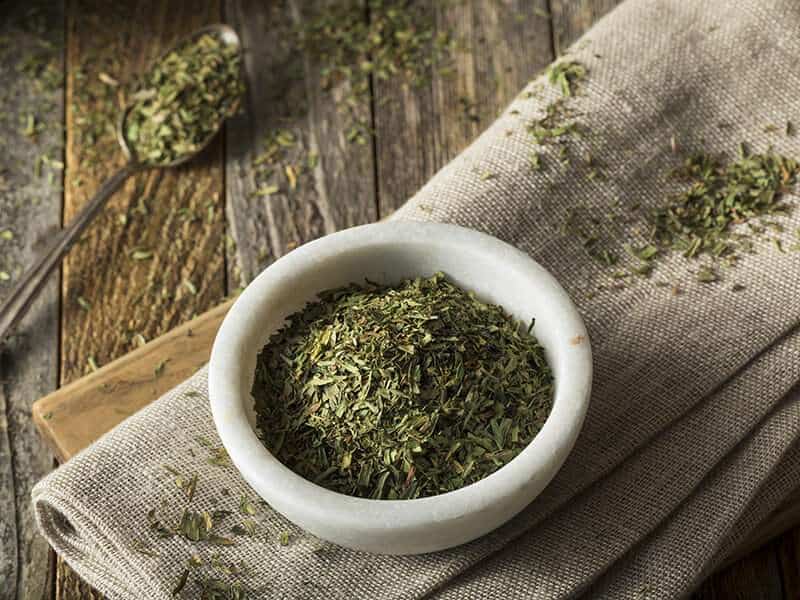
Like fresh tarragon, the dried form of this herb is perfect for chicken or fish recipes as thyme substitution. And you will be surprised with its flavor as it will bring a similar taste as thyme in these dishes.
And the ratio is also the same with fresh herbs. You can use the same amount of dried tarragon in place of dried thyme. Moreover, as they are in dried form, they can be easier absorbed into the meat when you use this dried tarragon for rubbing.
15. Dried Savory
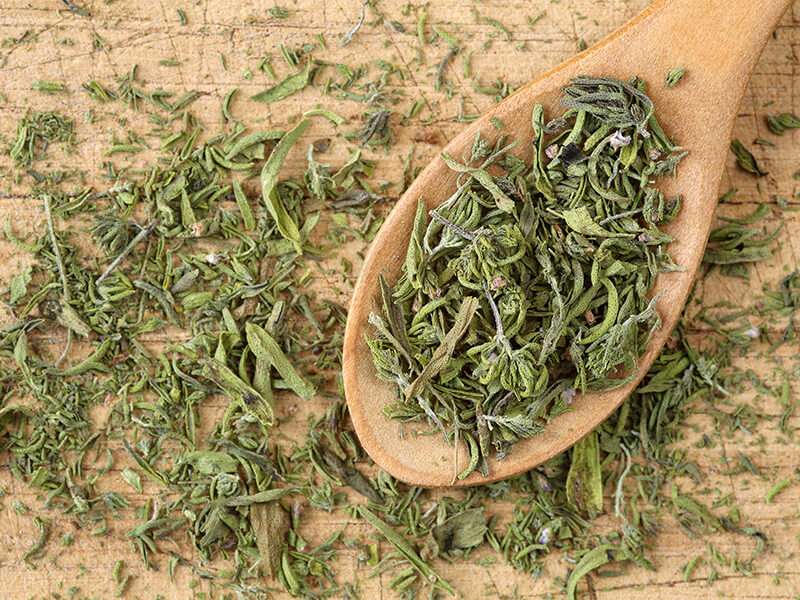
As savory belongs to the same plant family with thyme, fresh and dried savory will become the ideal thyme alternative.
So what should you do with dried savory to swap thyme? For the best result, you can use 1/2 amount of dried savory to replace 1 amount of fresh thyme, or 1 part of dried savory for 1 part of dried thyme.
And this substitution will make your stuffing dishes, soups, or sauces super tasty without thyme.
16. Dried Bay Leaf
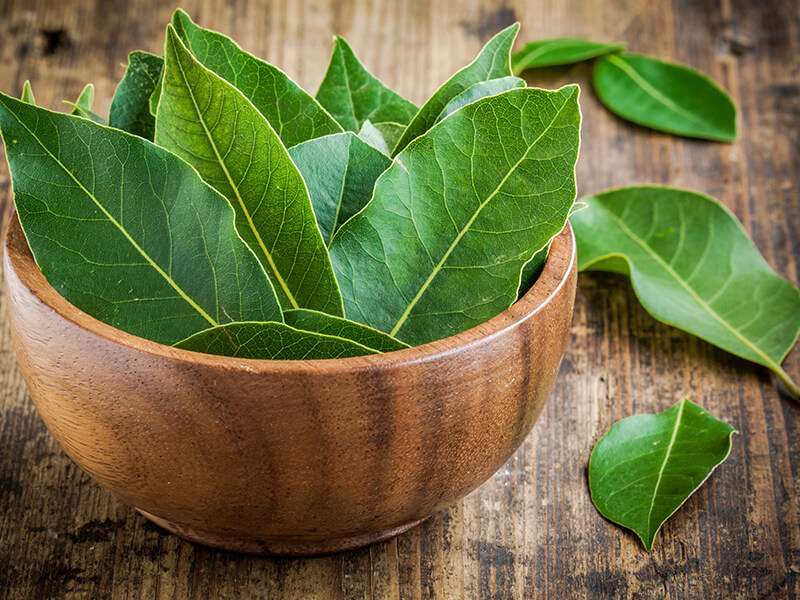
Bay leaf is famous for its bitter, minty, and aromatic flavor. Though thyme and bay leaf appearance are also different, you can still use this herb to substitute thyme in some fish, lamb, or beef soup and stew dishes.
Moreover, as the bitter flavor in fresh bay leaves might affect other components’ flavor, people prefer to use dried form. So 1 dried bay leaf might equal 1/2 teaspoon of fresh thyme or 1/4 teaspoon of dried thyme.
17. Italian Seasoning
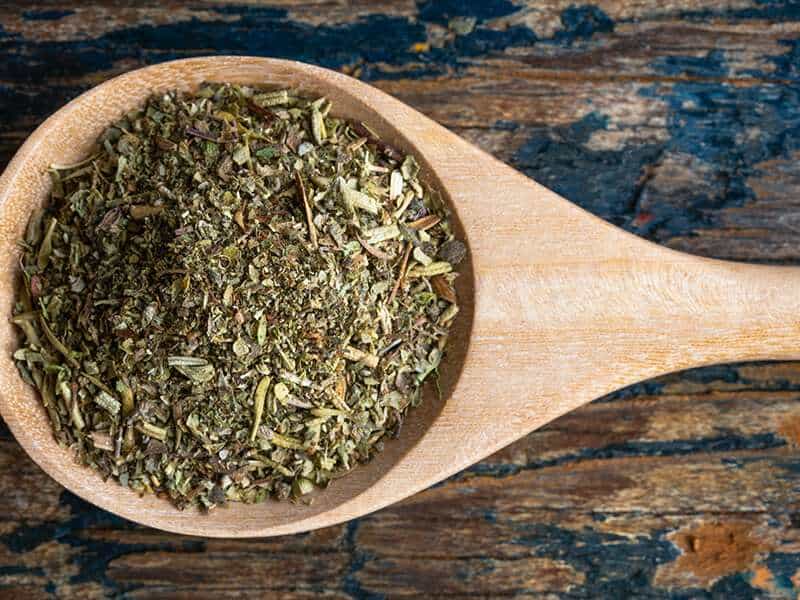
If you are in a rush and want to find some quick solution for thyme swapping, Italian seasoning can work in a pinch.
Italian seasoning typically includes rosemary, sage, thyme, and basil, so with a little hint of dried thyme in this spice, you can use them in place of thyme.
Normally, the ratio of 1:1 is fine in this case, but if you want to make sure you absolutely love their flavor in your dish, do not add too much. For more information, this seasoning is ideal for many Italian, Mediterranean foods, and grilled meat treats.
You can make Italian Seasoning at home without any difficulty. Watch this video to know more:
18. Poultry Seasoning
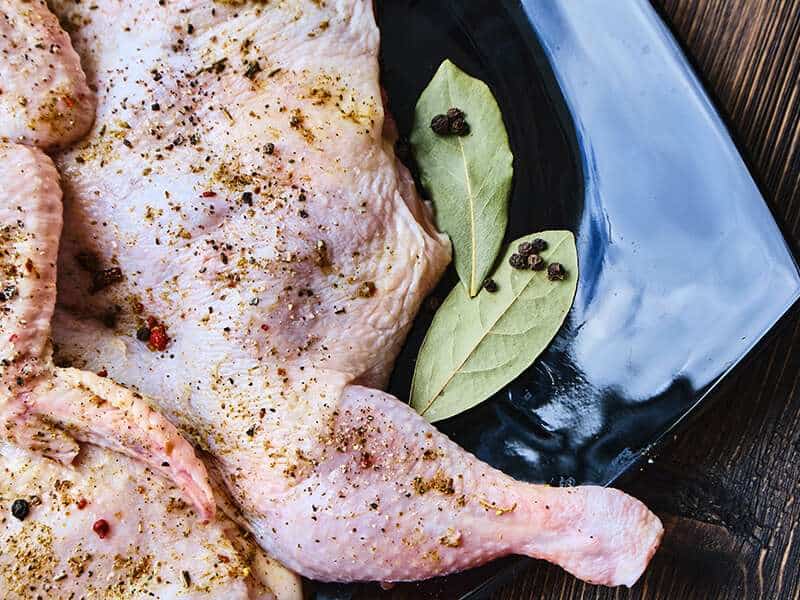
Poultry seasoning is another combination of dried thyme, sage, marjoram, rosemary, and some other ingredients. This spice is ideally used as a rubbing agent for your hearty meat dishes like chicken, pork, and fish, or as a seasoning in various recipes.
So overall, poultry seasoning’s flavor is pretty strong. So if you want to use this one for thyme replacement, you should try a small amount first. Technically, 1:1 ratio is not too bad for substituting thyme.
19. Za’atar
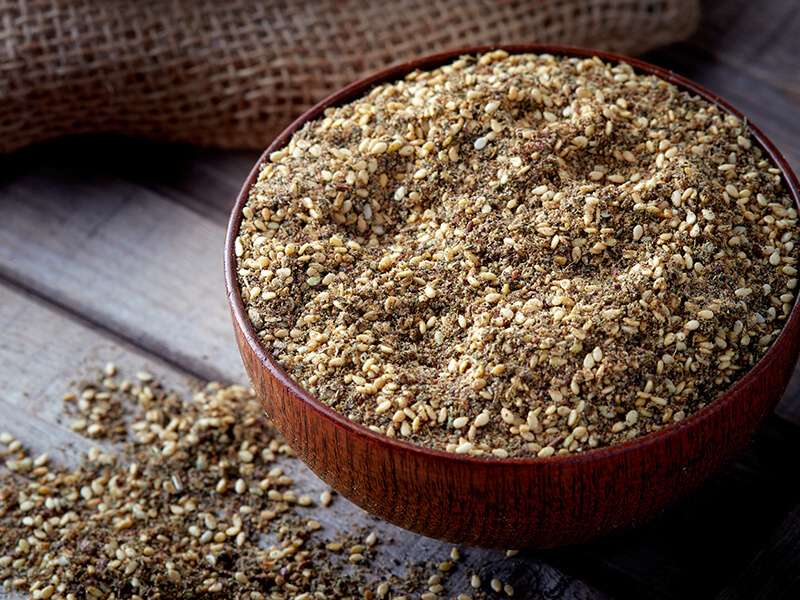
If you have been to Middle Eastern regions, you might have heard about this wonderful spice called Za’atar. And if you love chicken or fish, grilled veggies, pizza, the flavor of za’atar will make your stomach smile when you combine this spice with these dishes.
And once again, dried thyme is one of the dominant ingredients to make this spice, so I believe this spice could be a suitable thyme substitute.
However, as za’atar also contains sesame seeds, lemony sumac, and salt, you should use 1/2 teaspoon of za’atar for 1 teaspoon of thyme. Or as long as you try a little amount first and regulate the taste until you are happy with it.
20. Herbes de Provence
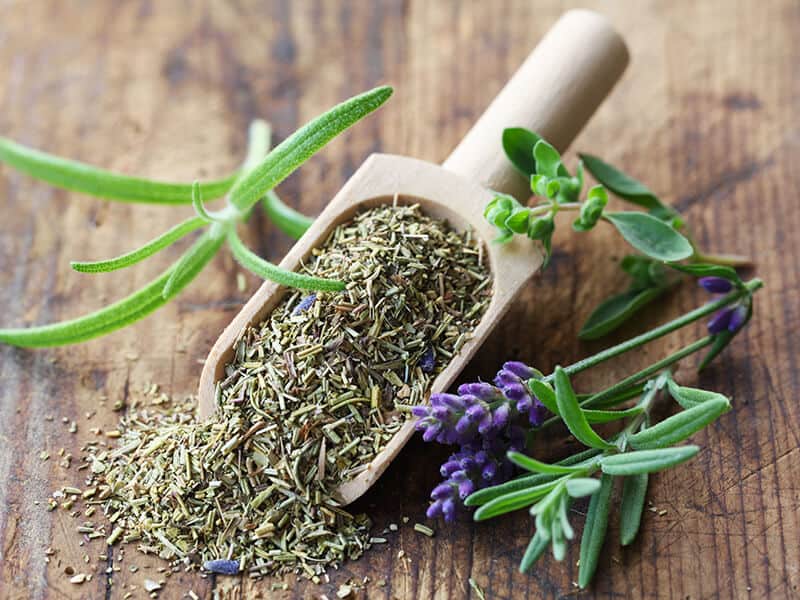
Herbs de Provence is a famous spice that originated from the French. This spice combines dried herbs that often include thyme, basil, marjoram, parsley, rosemary, tarragon, savory, and lavender flowers.
As it consists of thyme, you can use them to swap thyme. The appropriate ratio is 1:1, as 1 teaspoon of thyme is for 1 teaspoon of Herbs de Provence.
But here is a little heads-up: this spice might be slightly stronger than thyme, so you should slowly add them to your dish and taste to make sure you will not overuse it.
For your information, this spice blends well in veggie soups, meaty dishes, and sauces, especially in French, Mediterranean, and European cuisine.
Tips To Choose And Store Thyme And Other Herbs In General
For the good quality of thyme and herbs in general, here are some rules of thumb that you can follow, so your herbs always stay fresh and sustain the flavor as well as the aroma.
Choosing Good Thyme Is Not Difficult
Thyme, or any other herbs, should look fresh, vibrant, with green color. You should also check for any brown spots or mold on your thyme and avoid those with damaged leaves and stems or discolored thyme.
Do not choose thyme stems that still have flowers or buds attached as these factors might decrease the leaves’ flavor. Good fresh thyme has a pleasant earthy smell, so sniff it if possible.
Choosing dried thyme is easier as they are sold in a jar in the supermarket. So just take a quick look at the production day and choose the newest one.
Storing Thyme In Different Conditions
Remember, as thyme’s aroma and flavor will weaken after harvesting, so try to consume them as soon as possible.
As thyme has a woody stem, you should store them in the fridge. Here are some simple steps that you can do with your fresh thyme.
Step 1: Wash them thoroughly with water to get rid of dirt or germs
Step 2: Place your thyme on a wet paper towel and wrap the herb
Step 3: Put them into your plastic bag and store thyme in the refrigerator
With good storage, you can keep your fresh herb safe for up to 14 days in the fridge.
You can also freeze thyme to extend the shelflife from 3 to 6 months. There are also 3 steps to freeze herb:
Step 1: For better subsequent uses, you should divide it into smaller portions and put them in ice cube trays.
Step 2: Fill the cube with oil. You can use whatever oil you like. Close the lid if your ice cube tray has a lid.
Step 3: Place it in a freezer.
There are many kinds of herbs. And based on their characteristics, you will have a proper way to store them.
FAQs
Finally, if you still have concerns about thyme and their substitutes, these 5 questions and answers might solve them. Check it out now!
What Are Your Go-to Thyme Alternatives?
There are 20 options for you to choose for replacing thyme. And I bet you tried some of them, especially dried herbs as you can easily get them at the store. So which ones are your favorites to substitute thyme?
Please feel free to share your ideas about these alternatives in the comment part. And if you love this article, your likes and shares will encourage me to create more useful posts. Thank you.
References
- En.wikipedia.org. 2021. Thyme – Wikipedia.
- Alamgeer, A. et al. (2014), ‘Pharmacological Evaluation of Antihypertensive Effect of Aerial Parts of Thymus Linearis Benth’. Nutrients. 2017, vol.9(10), pp.1095, doi:10.3390/nu9101095. Acta Pol Pharm, vol.71(4), pp.677-682.

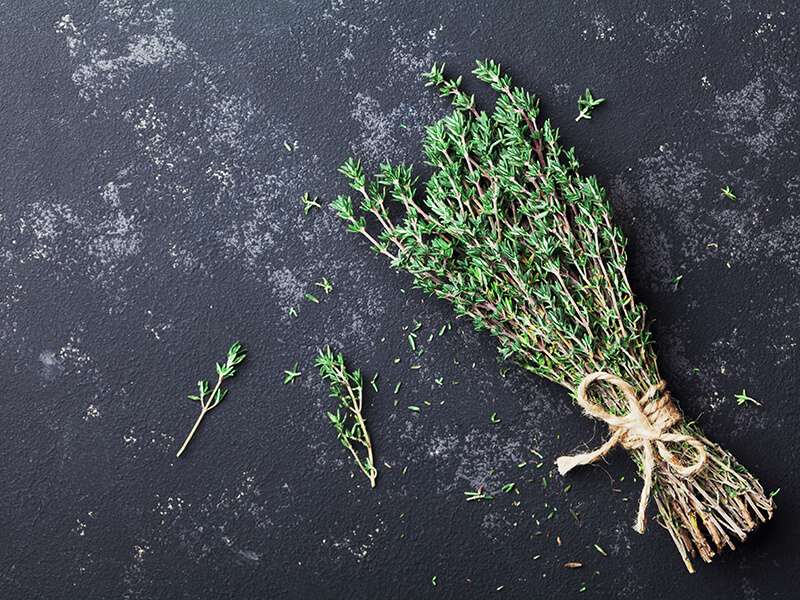
Liam O’Brien
Founder & Recipe Developer
Expertise
Education
Dublin Institute of Technology (now Technological University Dublin)
Ballymaloe Cookery School, County Cork, Ireland
Liam O’Brien is the co-founder and kitchen soul behind Good Tasting Meals, a chef who believes that cooking shouldn’t feel stressful or complicated.
He earned his culinary stripes at Technological University Dublin and polished his farm-to-table skills at Ballymaloe Cookery School. With over 15 years flipping pans and stirring up stories, Liam has worked in family cafés, bustling bistros, and everything in between.
At Good Tasting Meals, Liam brings you recipes that feel like home: cozy, simple, and full of flavor.